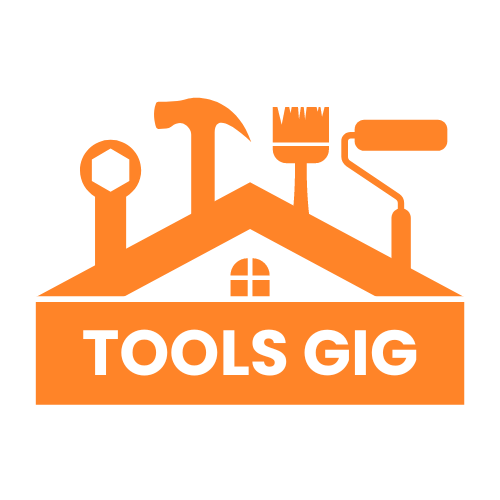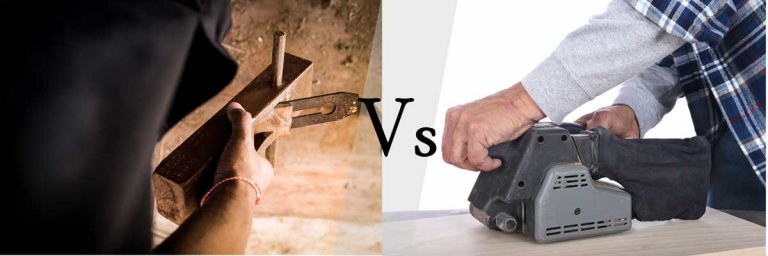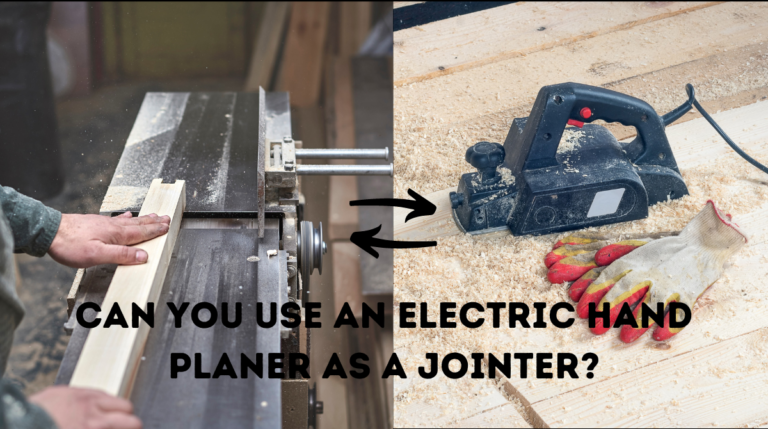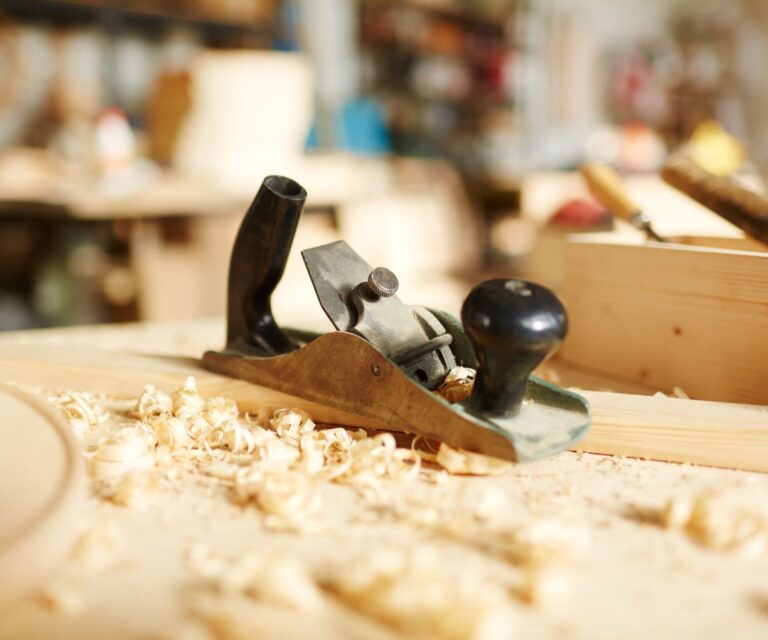Different types of Hand Planers and Their Uses – That Actually Works!
As an Amazon Associate I earn from qualifying purchases.
A hand planer is used to smooth out wooden materials. It has an adjustable blade on the body of the hand planer that smoothes the wood and makes the wood flat.
Modern hand planers have multiple different parts and features than their ancestors. Most of them contain mouth, iron, lever cap, depth adjustment knob, tote, knob, lateral adjustment lever, and the frog.
Manufacturing with all these parts and different functions has multiple different hand planers and uses according to their work, sizes, and characteristics.
All these make one hand planer different from the other and make suitable one for different jobs. Let me give you a broad detail of different types of hand planes and their uses.
Contents
Different Types of Hand Planers And Uses – Popular, Common & Best Planers
Planning wood along its side grain would result in thin shaving rising above the surface of the wood as the edge of plane iron pushed, leaving a smooth surface.
By applying different amounts of force on the wood towards the front, one can shave or flat or smooth a wood and also can control the amount of shaving.
While researching, I got approximately 19 different hand planers. There are others on the market, but I choose these hand planers, looking at their working flexibility and greater advantages.
I separate these hand planers into 4 different sections for you to easily understand. So that I can easily make my points to you and you easily understand which one you should choose for your job.
Most Popular Planes
Bench plane:
Bench plane is a high-quality tool that can smooth both softwoods and hardwoods. This planer comes with two handles, one on the back and one on the front, making it balanced and quite easy to use.
In this planer, the manufacturer used high-quality steel and polished wood. For those who are beginners, this planer is the ideal plane for them. This one’s quality is so good that it could pass along to future generations.
This Bench Planer is easy to set up and also easy to adjust. Ready to use right out of the box. It’s easy to use and affordable for general uses.
Veritas plane:
This plane’s main work is to smooth the plane or sizing lumber and put up a surface of the wood. It can also be used for edge jointing or turning up a surface.
But the body is made of fully stress-relieved ductile cast iron with a flat surface. This plane’s functions are not much different from the others.
But it is very easy and more comfortable to use than others. It takes a little time to set up. Overall, the quality is good and affordable for everyone.
Kanna Japanese plane:
Kanna is not for the beginning; those who have good experience can be comfortable with the Kanna Japanese plane. It cuts the plane on scrap wood, adjusts as needed, and gets a quality finish.
Beginners can focus on adjusting and, later on, sharpening skills. After learning the adjustment, it gets easier for them to use. It is a traditional Japanese plane, so it has its own unique history.
Common Hand Planers
Hand plane:
The hand plane is used for shaping wood using muscle power to force the cutting blade over the wood surface. Hand planer is a combination of a cutting edge.
Block plane:
A block plane is a small metal-bodied hand plane that has the blade bedded at a lower angle than another plane. It is comfortable to use.
Bullnose plane:
The bullnose plane has a blade flush with the edges of the plane, which trims the edges of a workpiece. It is used to trim shoulders and face tenons.
Veritas:
The Veritas plane is used for final leveling, smoothing, and flat surfaces. This planer is like the bench plane, so it is easy to use as a bench plane.
Chisel Plane:
The Chisel plane is a metal tool with a sharp beveled edge designed for cutting, gouging, and shaping. It is used for woodworking, stoneworking, and metalworking.
Compass plane:
The compass plane creates smooth curves that are fair to the eye and hand. It has a mass and momentum with a long adjustable sole that creates smoother curves.
Finger plane:
A finger plane is a small plane with a brass body mainly used by violin and guitar makers. It is used for narrow tasks and is very good at curves.
Fore plane:
A Fore plane is a woodworking bench plane used for preparing and flattening rough workpieces before using other planes like a joint plane and smoothing plane. It is longer in length and effective at leveling large workpieces.
Jack plane:
Jack plane is used for dressing timber down to size in preparation for edge jointing. It is the most common bench plane. It is used. The jack name is someone times used mutually with the longer and more effective at leveling large workpieces.
Kanna Japanese:
They are made of hardwood, and they are pulled rather than pushed away like western planes for a smooth finish.
Molding plane:
It is used to make complex shapes. Nowadays, the electrically powered model rules the market.
Rabate plane:
Rabate plane is designed for cutting rebates in wood. It is equipped with a spur that is designed to score the wood as the rebate is cut.
Best in the price
Jack plane:
The jack plane is one of those planes that need to slice wood for a long time because of its light shaving. This one is the best for beginners to learn perfect shaving. It costs around $15 to $50.
Kanna block plane:
The Kanna block plane is an affordable block plane for any type of worker or for home uses. It can perform effectively on small woodwork finishing. It cost almost $40.
Bullnose plane:
The bullnose can be or mainly used on slightly twisted wood, and you need to trim a millimeter of wood then; bullnose is the best right now. It cost not more than $90.
Best Hand Planer in the market right now!
Great neck C4 bench jack plane:
It quickly peels through the wooden surfaces. This planer uses a steel cutter that shaves through the rough surface. It also comes with a long-lasting blade. The materials are alloy steel, plastic, and iron. It has a 5-star rating.
Caliastro No.4 bench plane:
Caliastro offers a 2-inch blade made of hardened, tempered steel and offers long durability. The wood handle and knob offer a very attractive gloss finish. The product had a 4.5 rating in the market.
Kakuri woodworking Japanese block:
These planes are the best example of high-quality Japanese craftsmanship. It is small in size, so it Is easy to carry. The blade is made of high-carbon Japanese steel. It is best for chamfering, smoothing out edges, and angled shaving on wood. It also got a 4-star rating in the market.
Note: these ratings are taken from according to the various marketplace sites like Amazon, Walmart, and eBay. It may change over time.
Safety Procedures For A Hand Planer
The blade on the hand plane is razor-sharp. When the blade is secured within the tool and is generally out of harm’s way, be very careful whenever you use the blade while shaving and while changing the blade. Never place your hand on any part of the plane while using it.
FAQs
Q. When would you use a hand planer?
Ans: A hand planer is mainly used to slice or flattered wood. One can use it to shave the edge of a sticking door, chamfering the corner of the board, or straightening one that is twisted.
Q. How to choose a hand planer for your project?
Ans: You should look at multiple things while choosing a hand planer for your project. The metal body planer is the best for any project. Then, look at the blade to see if it can be adjustable and choose the adjustable one.
After that, look at the back tote and front knob. If those fit your hand and are made of wood, choose those; they provide you with better grip and comfort. Last, if there is any chip breaker, it would be great. This way, you can choose a hand planner for any project.
Q. What is the best hand plane to flatten wood?
Ans: The next hand plane to touch wood is a jointer plane. This longhand plane is ideal for precision flattening aboard; it gives a nearly finished surface. It goes along the high spots and gradually brings them all down together.
Conclusion
There are different types of hand planers for different works and workers; it depends on what comforts you. That’s why I reached and used most of them to provide you with the best 19 different hand planers and give you their point-to-point uses.
So, I hope you got all those points and were helped by those. Thank you.




